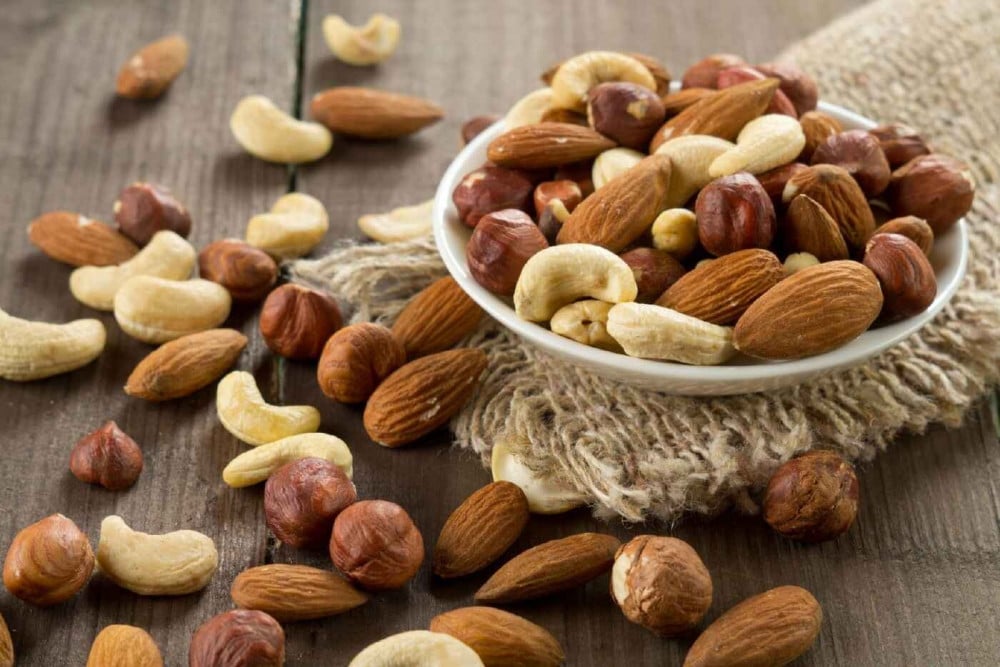
Nuts are considered one of the natural foods rich in nutrients and vitamins important for human health. When it comes to children, including nuts in their diet can be beneficial for promoting their health and proper growth. But when it comes to taking care of children , we must be careful in choosing the right types and introducing them in a safe way.
In this article, we will learn about the best types of nuts suitable for children and explore the health benefits of nuts for them with the best perfume store in Saudi Arabia. We will also focus on safe ways to provide nuts to children to ensure their safety and health.
The best types of nuts for children
There are many different types of nuts, but some are more suitable for children due to flavour, size and nutritional value. Among the best types of nuts for children are:
- Pistachios: Pistachios are considered one of the most famous and common types of nuts among children. They are high in protein, fibre, vitamins and minerals, such as vitamin E and potassium. Pistachios can be served as a snack for children, or they can be mixed with yogurt or added to morning cereal.
- Almonds : Almonds are a distinctive nut and rich in vitamin E, calcium and protein. It promotes healthy bones and teeth and promotes healthy body growth. Almonds can be eaten in the form of roasted nuts, or they can be added to many dishes such as salads or desserts.
- Hazelnuts: Hazelnuts are nuts rich in healthy fats, fiber, vitamins and minerals. Hazelnuts also contain antioxidants that promote heart health and reduce the risk of chronic diseases. Hazelnuts can be served as a snack for children, or they can be added to cakes or desserts.
- Cashews: Cashews contain a high percentage of healthy fats, protein, and minerals such as magnesium and zinc. Cashews are a delicious option to introduce to children, and can have an attractive flavor when added to main dishes or salads.
- Mixed nuts : Mixed nuts may be an excellent choice to offer children a variety of different types. Mixed nuts can be purchased ready-made from stores or prepared yourself by combining different types of nuts, such as almonds, pistachios, hazelnuts, walnuts, and cashews.
Benefits of nuts for children
Nuts contain many health benefits for children and contribute to their proper growth and overall health. Among the benefits of nuts for children we find:
- Supporting growth and development: Nuts contain protein, minerals and vitamins that contribute to supporting children's growth and physical and mental development.
- Promoting heart health: Nuts contain healthy fats and fiber that contribute to improving heart health and reducing the risk of heart disease in the later growing years.
- Supporting the immune system: Nuts contain antioxidants that enhance the health of the immune system and protect children from many common diseases.
- Improving energy and physical activity: Honey and nuts contain calories, proteins and fats that provide children with the energy and physical activity needed to learn, play and grow.
- Improving brain functions: Some types of nuts contain omega-3 and other fatty acids that contribute to improving brain functions and enhancing memory and concentration in children.
Precautions when eating nuts
When offering nuts to children, you must take the necessary precautions and follow some important notes to ensure their safety:
- Allergies: Before introducing nuts to children, you must check if they have any allergies to nuts. Nuts may cause allergies in some children, and reactions may be severe in some cases. If a child has an allergy to nuts, you should avoid giving them nuts completely.
- Suitable age: Nuts should be offered to children at an appropriate age. In general, 2-3 years of age is considered the appropriate age to introduce some types of soft and ground nuts to children, while it is preferable to delay introducing whole and hard nuts until at least the age of four.
- Nut shells: Nut shells may be dangerous for young children who can swallow them easily. You must make sure to remove the shells before serving nuts to children. Be careful not to serve nuts in whole forms or in shells. Pistachios can be served without shells .
- The appropriate quantity: Nuts should be provided to children in moderate and age-appropriate quantities. When offering nuts as a snack, provide a small and appropriate amount for the child, and avoid serving large quantities that may lead to excess calories and weight gain.
Tips for introducing nuts to children
Here are some important tips for introducing nuts to children in a safe and healthy way:
- Serve them as a snack: Nuts can be served as a healthy snack for children instead of unhealthy fast food.
- Serve it with fruits: Nuts can be mixed with children’s favorite fruits to add a delicious flavor and increase the nutritional value of the meal.
- Preparing mixed nut meals: Mixed nut meals can be prepared by mixing different types of nuts to provide a variety of nutrients, such as adding walnuts with pistachios and almonds.
- Preparing nut paste: A delicious nut paste can be prepared by mixing nuts with a little healthy oil and honey to add flavour.
- Control portions: The quantities of nuts provided to children must be controlled to avoid excess calories and excess weight.
Nuts contain many important nutrients that contribute to promoting children's health and proper growth. Nuts provide protein, healthy fats, fibre, vitamins and minerals that promote children's physical and mental development and strengthen their immune system. It is important to offer nuts in a safe and age-appropriate way, and avoid offering them to children who are allergic to nuts. Contact us to choose the best types of nuts and present them in innovative ways to make children’s meals delicious and healthy and encourage them to eat healthy nutritional foods.

